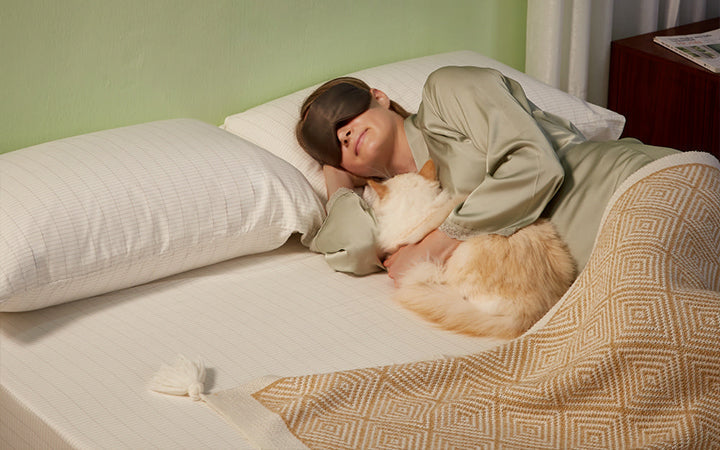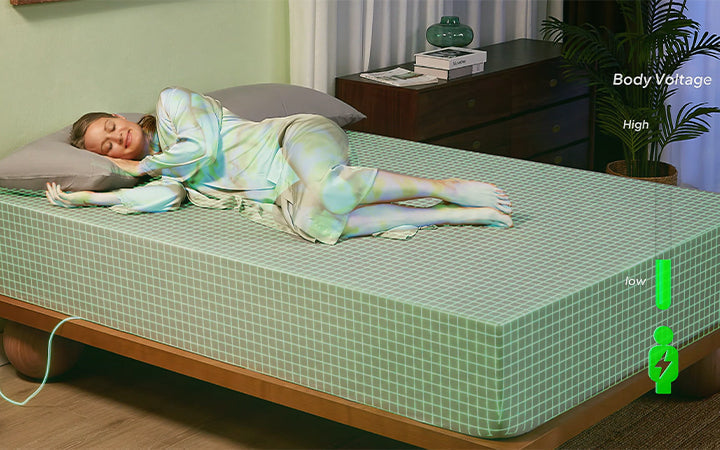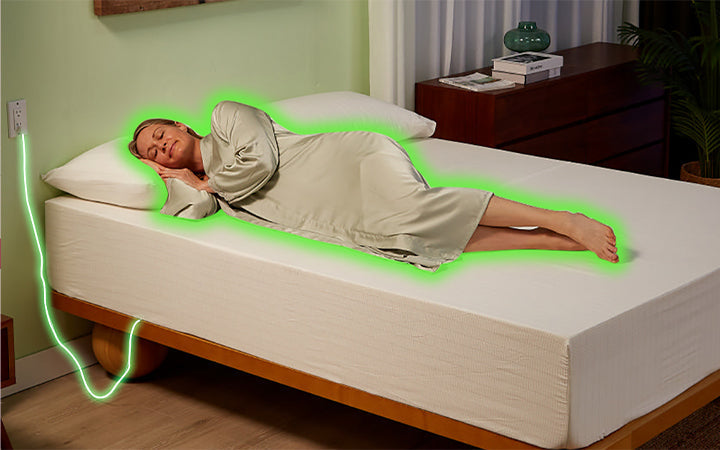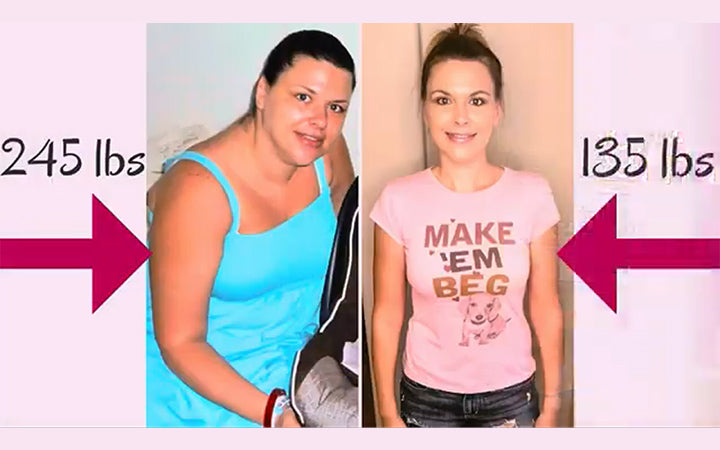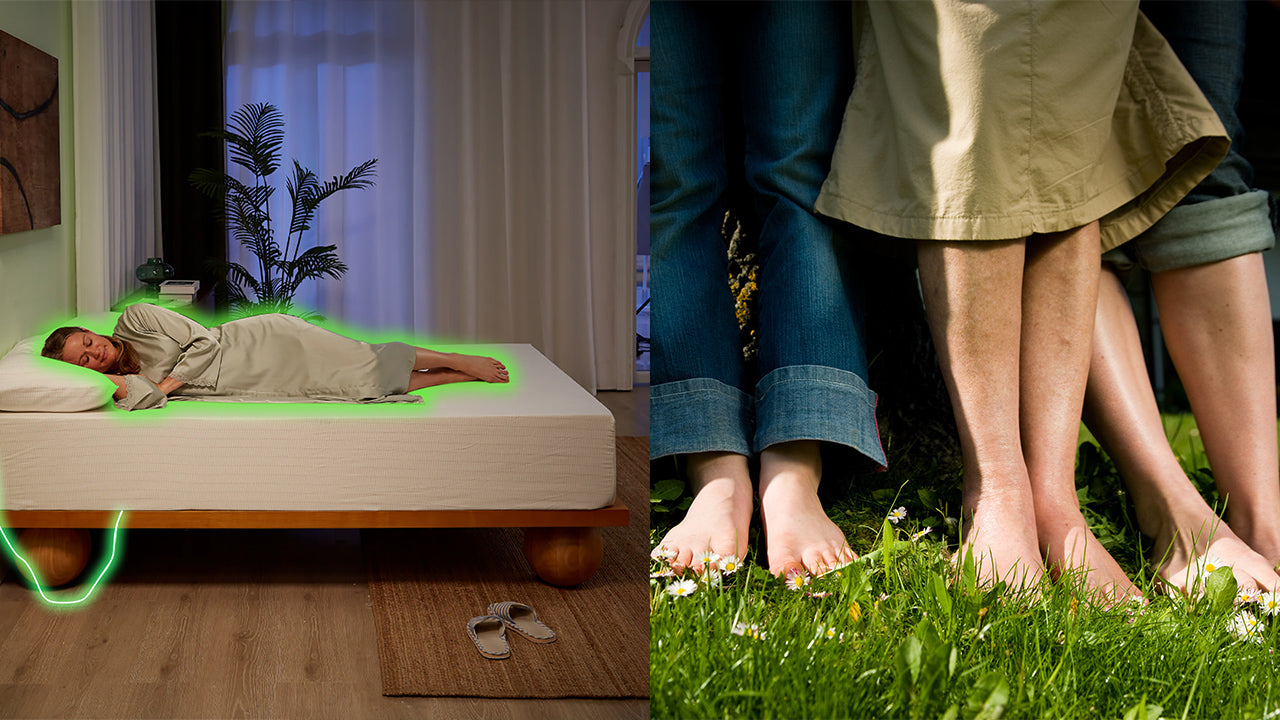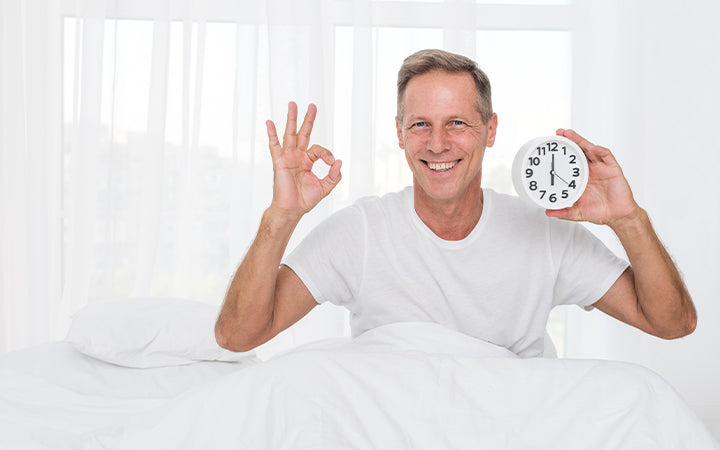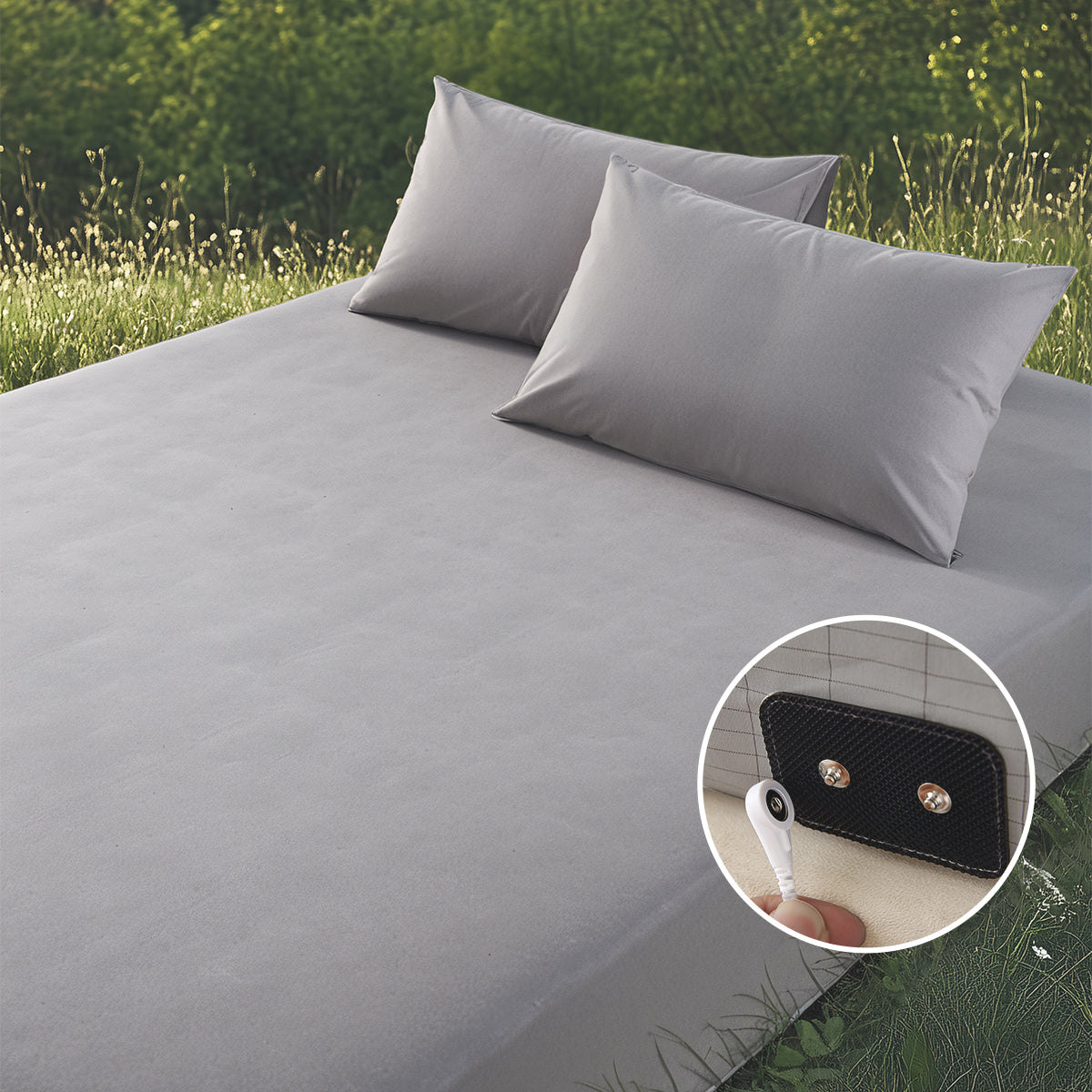How to Use Grounding Sheets Effectively for Improved Sleep and Health
If you have trouble sleeping, deal with daily aches and pains, or just feel a bit stressed and disconnected, you're not alone. Many people are looking for simple ways to improve their well-being. One option you may have heard about is the grounding sheet. The idea is to reconnect with the Earth's natural energy while you sleep, which might sound strange at first, but it's based on a straightforward concept. This guide will walk you through what grounding sheets are, what they claim to do, and how to use them correctly.

What Exactly Is a Grounding Sheet?
A grounding sheet looks almost identical to a regular fitted sheet on your bed. The difference is in the material. It's typically made from cotton, but has a fine grid of conductive thread, like silver or carbon, woven into the fabric.
This sheet comes with a special cord. One end snaps onto the sheet, and the other plugs into the round, third hole of a three-prong wall outlet. This is the "ground" port. It's very important to know that the sheet does not use any electricity. It only uses the ground wire, which is a safety feature in your home's wiring that connects directly to the earth outside. This setup creates a simple, safe path for you to be in contact with the ground's natural surface energy, even while sleeping indoors. Understanding the complete concept and technology behind grounding sheets helps you make informed decisions about incorporating earthing into your sleep routine.

What Are the Reported Health Benefits?
The main idea behind grounding is that the earth's surface has a subtle, natural energy that our bodies have been disconnected from by modern living (think rubber-soled shoes and insulated houses). By reconnecting, it's believed our bodies can better manage inflammation and stress. People who use these sheets consistently report a number of positive changes.
- Improved Sleep Quality. This is the most common feedback. Users often say they fall asleep faster and wake up less during the night. The thinking here is that grounding helps level out cortisol, the body's stress hormone, which can disrupt sleep when it's too high at night.
- Reduced Inflammation and Pain. Many common aches and pains are linked to chronic inflammation. Grounding is thought to help reduce this inflammation, which is why some users with arthritis, injuries, or general soreness report feeling better after using the sheets regularly.
- A Calmer Mood and Less Stress. Grounding may help shift your nervous system out of a constant "fight-or-flight" mode and into a more relaxed "rest-and-digest" state. This can lead to a feeling of being less anxious and more centered during the day.
Because of these effects on sleep, inflammation, and stress, some people also notice other improvements, like better blood circulation and faster muscle recovery after a workout.

A 3-Step Guide to Setting Up Your Grounding Sheet
Proper setup is straightforward but requires careful attention to one critical detail to ensure your sheet functions as intended.
Step 1: Place the Sheet on Your Bed
Put the grounding sheet on your mattress in the same way you would a regular fitted sheet. The sheet that comes into the most direct contact with your body should be the one that works best.
Step 2: Test Your Outlet
You need to make sure that your wall outlet is correctly grounded before you do anything else. You can get a little outlet checker with most grounding sheets, or you can buy one at any hardware store. Put the checker into the outlet you want to use. A certain pattern of lights, usually two amber lights, will turn on to show that the configuration is "Correct" or "Grounded." If the lights say anything other than "Grounded" or "Open Ground," that outlet won't operate and shouldn't be used. For the sheet to work, it is very important to utilize an outlet that is correctly grounded.
Step 3: Connect the Cord
After you check your outlet, use the grounding cord that came with it. Securely snap one end into the conductive connecting tab that is on the sheet itself. Firmly plug the other end, which has only one prong, into the ground port (the round third hole) of your confirmed outlet.

Best Practices for Maximizing Effectiveness
With your sheet correctly installed, your connection to the earth is ready. Following a few key practices will ensure you get the most significant and consistent results from it over time.
Make Direct Skin Contact Your Priority
The most important practice is ensuring direct skin contact with the sheet. The conductive threads must touch your skin to work, so sleeping with bare legs, feet, or your back on the sheet is ideal. Pajama shorts or a tank top work well. Avoid placing any other sheet between you and the grounding sheet, as it will act as a barrier and block the connection.
Be Consistent with Nightly Use
The benefits of grounding often build up over time, so consistent nightly use is essential. While some people notice a difference right away, others may take a few weeks. Make using the sheet a non-negotiable part of your sleep routine to give your body time to adjust and respond.

Keep the Sheet Clean and Well-Maintained
Body oils and lotions can reduce the sheet's effectiveness, so proper care is crucial. Wash the sheet every one to two weeks using a mild liquid detergent. To protect the conductive threads, never use bleach, fabric softeners, whitening detergents, or products with oils. You can line dry it or use a machine dryer on low heat.
Stay Hydrated for Better Conductivity
Staying hydrated helps improve the sheet's effectiveness. The natural energy from the earth transfers more easily through hydrated skin than through dry skin. Simply drinking enough water during the day supports a better connection at night.
Periodically Test Your Setup
To check that your sheet is still working after long-term use, you can use a multimeter from a hardware store set to the 'continuity' setting. By testing the connection from the cord's plug to the sheet's surface, a beep from the multimeter confirms that the conductive threads are still intact and functioning correctly.
Restore Your Natural Connection With Grounding Sheets!
In essence, a grounding sheet provides a simple, passive connection to the earth's natural energy. While it's not a magic solution for every ailment, it can be a powerful addition to your overall wellness routine. By promoting deeper sleep, easing inflammation, and calming your nervous system, it offers a practical way to support your body's innate ability to find balance. It is a foundational tool that can help you feel more centered and rested as part of a healthy, conscious lifestyle.

FAQs about Grounding Sheets
Q1: Do grounding sheets really work for sleep?
Based on a combination of user testimonials and initial scientific research, they appear to be highly effective for many people. By helping to regulate the stress hormone cortisol and shifting the nervous system into a more relaxed state, grounding bed sheets address key physiological factors that often disrupt sleep.
Q2: What are the main health benefits?
The most consistently reported health benefits are improved sleep quality, a reduction in chronic pain and inflammation, and decreased stress and anxiety. Other potential benefits include better circulation, faster recovery from exercise, and more energy.
Q3: How long does it take for grounding sheets to work?
This varies greatly from person to person. Some people report feeling calmer and sleeping more deeply from the first night. For others, it may take several weeks of consistent use to notice a significant shift. Patience and consistency are important.
Q4: What are the disadvantages of grounding sheets?
The primary disadvantage is their reliance on a properly grounded outlet; if your home's wiring is old or faulty, they won't work without correction by an electrician. Some people may experience mild, temporary sensations like tingling when first starting. Finally, they require specific care during washing—avoiding bleach, fabric softeners, and high heat—to protect the conductive threads. They are a tool to support wellness, not a cure-all, and managing expectations is important.
Not sure where to start? → Try this grounding guide for beginners.
